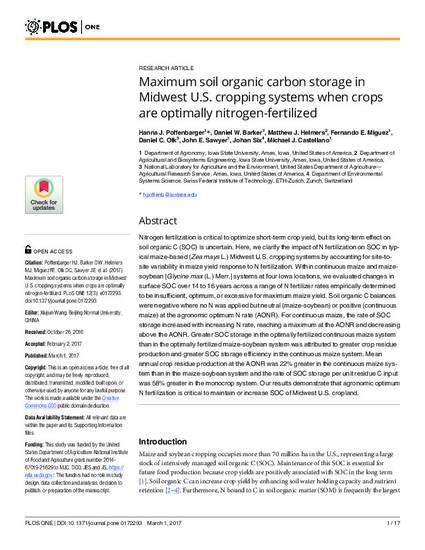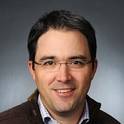
Nitrogen fertilization is critical to optimize short-term crop yield, but its long-term effect on soil organic C (SOC) is uncertain. Here, we clarify the impact of N fertilization on SOC in typical maize-based (Zea mays L.) Midwest U.S. cropping systems by accounting for site-to-site variability in maize yield response to N fertilization. Within continuous maize and maize-soybean [Glycine max (L.) Merr.] systems at four Iowa locations, we evaluated changes in surface SOC over 14 to 16 years across a range of N fertilizer rates empirically determined to be insufficient, optimum, or excessive for maximum maize yield. Soil organic C balances were negative where no N was applied but neutral (maize-soybean) or positive (continuous maize) at the agronomic optimum N rate (AONR). For continuous maize, the rate of SOC storage increased with increasing N rate, reaching a maximum at the AONR and decreasing above the AONR. Greater SOC storage in the optimally fertilized continuous maize system than in the optimally fertilized maize-soybean system was attributed to greater crop residue production and greater SOC storage efficiency in the continuous maize system. Mean annual crop residue production at the AONR was 22% greater in the continuous maize system than in the maize-soybean system and the rate of SOC storage per unit residue C input was 58% greater in the monocrop system. Our results demonstrate that agronomic optimum N fertilization is critical to maintain or increase SOC of Midwest U.S. cropland.
Available at: http://works.bepress.com/matthew_helmers/126/

This article is from PloS ONE 12 (2017): e0172293, doi: 10.1371/journal.pone.0172293.